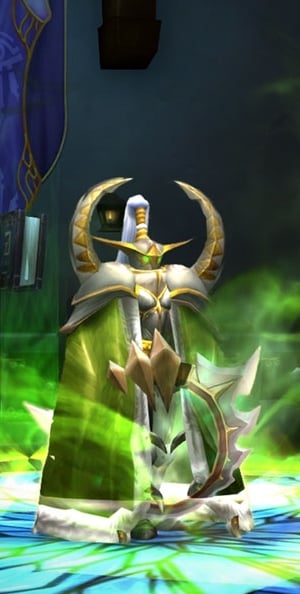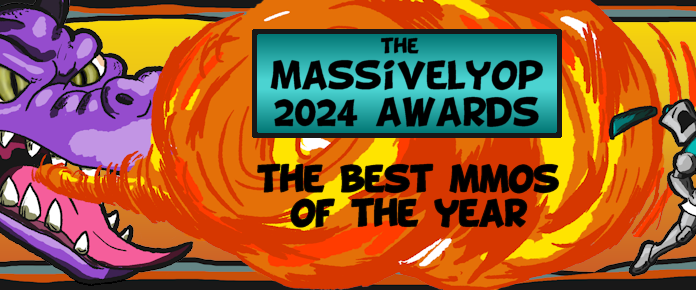
It was around the time that I was burning my way through drakes that I found myself nodding in appreciation. This was it, I thought. This was the itch that I’d been missing for so long. This was what made World of Warcraft so memorable, and this was when I finally felt like really going back.
Saying that I was apprehensive about World of Warcraft‘s newest expansion would be putting it mildly. Warlords of Draenor was a terrible expansion, and while you can debate whether it was better or worse than its previous worst offering of Cataclysm, at that point the debate is rather academic, isn’t it? Things are not going well if you’re jockeying back and forth for the bottom spot. The expansion was also coming out after another huge content drought, and combine that with endgame issues, balance issues, and just a general sense of age… could Legion actually ever be good?
I can’t say with certainty that it’ll be great all of the way through. But I can definitely say that what I’ve seen so far holds up well, even without any drakes, because it traffics on that sense of the great big new that makes the game such a joy.
 I’ve done a lot of thinking about WoW over the years, and looking back on it, I think what makes it work best is novelty. It’s not that everything has to be new all the time; its strength lies in the ability to whip something out that you don’t see coming but fits in just as well. At its best, World of Warcraft‘s expansions feel like whole new worlds, experiences with a very specific and directed feel and lore.
I’ve done a lot of thinking about WoW over the years, and looking back on it, I think what makes it work best is novelty. It’s not that everything has to be new all the time; its strength lies in the ability to whip something out that you don’t see coming but fits in just as well. At its best, World of Warcraft‘s expansions feel like whole new worlds, experiences with a very specific and directed feel and lore.
When you look at the better expansions, it becomes quite clear. The Burning Crusade trafficked on surreal imagery and alien vistas, the idea of dreamlike and unbelievable phenomena being confronted and working within that half-real space. Wrath of the Lich King ground the whole thing into a remorseless prison of black metal, rivets, and stone, an expansion about facing a heart of darkness and fighting back against a corruption within. Mists of Pandaria threw itself completely into being a land with evocative places, landscapes, and creatures that we had not seen, a harmony disrupted and a smooth cycle that could not right itself.
Is it any wonder, then, that Cataclysm and Warlords of Draenor – two expansions exclusively concerned with the past – would turn out as bad as they did? There was no space for the unexplored bits of well-worn continents to feel like wholly new spaces. And there would be reason to fear the same with the Broken Isles.
But that isn’t the case. Legion feels like a return to form. It feels like stepping not into familiar ground but into a realization of how unfamiliar the familiar really is, starting right off with the Legion invading in both the Broken Shore scenario and the pre-expansion events.
The Broken Shore starts out without giving you much introduction to your faction leaders, but if you’ve spent any time in the game before, you do know these people. And it doesn’t need much introduction to show you what’s going on. You arrive at a landing that should have already happened and you see the beaches swarming with enemies, and you know right off that things are wrong. This isn’t just a battle.
It’s repeated over and over, that this is not the Legion we know. And the game sends that message well by showing us just a hint of what awaits around the Tomb. It sends a message right away that what we thought of as previous Legion invasions were nothing more than strolls. Visits. Those weren’t invasions; this is an invasion.
I hate to just compare things to Warlords of Draenor, I really do, but the comparison is right there. At the end of that introductory experience, you’d been told repeatedly that there was no going back, but it didn’t feel real. Indeed, moments after the scenario ends, a portal is opened from your capital city. Here, no one tells you that there’s no going back; you feel it because the events shaping the Alliance and the Horde both feel momentous. They’re not emotional in the sense that I felt the urge to cry, but they’re emotional in the sense that this felt like it had cost. You start off by losing, and it’s the sort of loss that leaves you wondering how you can even keep fighting.
The whole thing brings back memories of the Wrathgate, of the opening of Ahn Qiraj, of the destruction of Theramore. That weight, the sense that something new is happening, and a realization of the scale of the threat. It’s elegantly handled, calling back without simply leaning on the past.

Fighting through the scenario itself is something of a curbstomp, although there are a fair number of vehicles littered around, which is something that was also ported over to the invasions. Since the game’s world quests work on a similar principle, I’m hoping to see the same thing play out elsewhere, which I very much like. I like that the game is increasingly embracing that idea that maybe not everything needs to have set solutions, that you can toss things around and let things get a bit ramshackle in places. It may not be the most effective way to handle the scenario, but I like stealing vehicles and driving them, and it adds a sort of cinematic feel to the proceedings.
On the live servers, of course, the scenario terminates rather abruptly, since you can’t head off to the Broken Isles just yet, but in the expansion it flows very naturally into the fact that you need to go face the Legion more directly. It also flows very naturally into the sense that you do not, in fact, know how you’re going to do that, because the Alliance and the Horde have every reason to be at one another’s throats now and everyone feels divided and weakened. It nicely sets up the founding of the order halls and the acquisition of artifacts… which is something I’ll start diving into in my next piece.
What? I spent three articles tearing the heck out of Warlords of Draenor for being sub-par, I think Legion deserves at least as much space to get a solid nod and a pat on the back. So let’s dive into artifacts, mechanics, and class halls in part two later this week… after the launch.













